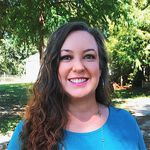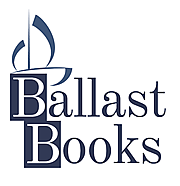Why These Attacks Happen and What We Can Do to Prevent Them
It has become all too common to hear news of another school shooting in America, and the problem isn’t going away.
Ended
It has become all too common to hear news of another school shooting in America, and the problem isn’t going away. Once you understand what goes on inside the minds of the perpetrators of these tragedies, you will realize the frequency of these attacks is bound to increase unless we do something to intervene with the population most at risk for committing these act.
School Shooter Next Door provides an in-depth look at where America is today with regards to school shooting prevention, how the country got to this place, and how close leaders are to detecting and preventing these events in the future. Katherine Ball describes on a psychological level what prompts a person to commit these acts, and explores a number of avenues where we can combat these attacks before they happen, specifically with regards to mental health interventions and treatment.
This book will appeal to the majority of Americans who wish to provide a safe school environment for our children, but who feel helpless and frustrated by our inability, as a nation, to protect innocent students. Parents and educators alike have a vested stake in finding a solution to the problem. Intertwining scientific findings and principles with real world examples, this book leaves readers with a comprehensive understanding of the psychological and societal issues related to school shootings and provides them with actionable steps they can take in their community to help prevent school attacks.
As well as being a clinical psychologist, Dr. Ball is also a mother with school age children. Every school shooting affects her as a parent, and it is important for her to share strategies that can be effective in lowering the incidence of these attacks.
I. Where America is today
A. Americans used to think if only they could pinpoint threats beforehand we could prevent them. But Parkland school shooter Nicholas Cruz proved that even with the advance knowledge that a person is a threat, a tragedy can still occur.
B. Tools we have been using over the past few years have not worked to prevent school shootings, nor have any significant changes been made other than a few minor gun control laws being passed. The only way to prevent these attacks is focus on the person holding the gun.
II. How society get to this place?
A. Cultural shift towards individualism and away from connection to the community. People are not as aware of what is happening in the lives of friends, relatives, and neighbors as they once were.
B. Social media/internet culture is supposed to connect people, but teenagers now (the first generation to go through adolescence in the age where everyone has a cell phone) report feeling more lonely and isolated than ever before.
C. Pervasive lack of options with regards to managing individuals who are at risk of becoming school shooters.
III. Who are we defending our schools against?
1. Psychotic (those who experienced breaks with reality and who are experiencing delusions and/or hallucinations)
2. Traumatized (those who had experienced significant trauma)
3. Antisocial/Psychopaths (those with a lack of empathy)
B. Lack of empathy as a scientific way of looking at evil. Three conditions which often exhibit a lack of empathy (Borderline personality disorder, antisocial personality disorder, and autism, more specifically the condition formerly known as Aspberger’s syndrome.)
III. How can we stop these attacks
A. Perpetrator detection - how close are we?
B. Once a potential perpetrator is pinpointed, what can be done? The ethics of preventative detention of potential threats and mandatory treatment will be discussed here.
C. How the political climate has gotten in the way of meaningful change and treatment.
IV. Treatment as the best course for prevention
A. Challenges in providing treatment. Discussion of the decommissioning of mental hospitals and the fallout we have seen across our country. Significant research and statistics as well as anecdotal instances will be covered in this section.
B. A tale of two schizophrenics. Contrasting stories of the lives of two schizophrenics - one who received the best care possible, and the other without access to treatment.
C. Potentially viable treatments:
1. Empathy training
2. Brain scanning/testing neuro-biological treatments
3. Treating trauma
4. The role of spirituality/religion
5. State funded group residential treatment for at risk youths
6. Medication - pros and cons
V. What you can do
This section goes into the various action steps readers can take to help prevent school shootings in their community. They range from things they can do on a personal level to a community level, and include simple steps they can take as well as larger endeavors they may undertake if they choose.
There are three main groups of target readers for this book:
This includes city leaders, policy and law makers, as well as those with neighbors, friends, and family members of either students or teachers in their local school system. Americans today are facing unprecedented violence in schools. While the incidence of these attacks is not as statistically significant as other perils such as car accidents, the idea that children are not safe in our schools rails against every ideal Americans hold dear as a nation.
There are over fifty million students and close to four million teachers in the U.S. public schools alone. This does not include private schools or college campuses which are also at risk due to the nature of the problem and the demographics of the perpetrators. There is a belief in America that we can change things, but so far we have been unable to chart a successful course in curbing violent attacks on our schools
This book will give readers the tools they need to understand what changes give us the best opportunity for a solution to this deeply disturbing problem.
This book can save lives, and what is more precious than the life of an innocent child?
The author of this book is a two time USA Today bestselling fiction author in multiple genres and while she only has a small following under her non-fiction real name, she does have over two thousand Facebook friends and is currently growing her platform.
As a fiction author she has a large following which she plans to reach out to and share this book. Under her pen names she has email lists totaling over fifty thousand readers, over forty thousand Twitter followers, Facebook pages with over ten thousand followers, and an extensive network of fellow authors who are willing to share this book.
With access to so many fans and followers, it is Katy’s plan to create a team of people who are interested in spreading the word about this book. She also intends to reach out to various groups and organizations that are focused on anti-violence in schools to recruit their help promoting the book on social media and to their newsletters.
Other avenues the author will use to generate sales include reaching out to individual schools and school districts for bulk sales, sending out advance reader copies to reviewers to create buzz, and utilizing Facebook and Amazon ads to reach a targeted audience.
The following books are expected to appeal to similar book buyers:
Why Kids Kill: Inside the Minds of School Shooters by Peter Langman, Ph.D. (St. Martin’s Press, 2009)
Ten years after the school massacre at Columbine High School in Colorado, school shootings are a new and alarming epidemic. While sociologists have attributed the trigger of violence to peer pressure, such as bullying and social isolation, prominent psychologist Peter Langman, argues here that psychological causes are responsible.
Drawing on 20 years of clinical experience, Langman offers surprising reasons for why some teens become violent. Langman divides shooters into three categories, and he discusses the role of personality, trauma, and psychosis among school shooters.
From examining the material evidence of notorious school shooters at Columbine and Virginia Tech to addressing the mental states of the violent youths he treats, Langman shows how to identify early signs of homicide-prone youth and what preventive measures educators, parents and communities can take to protect themselves from the tragedy.
School Shooters:Understanding High School, College, and Adult Perpetrators by Peter Langman, Ph.D. (Rowman and Littlefield Publishers, 2015)
School shootings scare everyone, even those not immediately affected. They make national and international news. They make parents afraid to send their children off to school. But they also lead to generalizations about those who perpetrate them. Most assumptions about the perpetrators are wrong and many of the warning signs are missed until it’s too late. Here, Peter Langman takes a look at 48 national and international cases of school shootings in order to dispel the myths, explore the motives, and expose the realities of preventing school shootings from happening in the future, including identifying at risk individuals and helping them to seek help before it’s too late.
Rampage: The Social Roots of School Shootings by Katherine Newsome (Hachette, 2008)
A distinguished sociologist reveals the warning signs of a school shooter--and why we so often miss them
Parkland. Sandy Hook. Columbine. The list of school shootings gets longer by the day, and it often seems like no school is safe. Over the last decades, school shootings have decimated communities and terrified parents, teachers, and children in even the most family friendly American towns and suburbs.
We talk about these tragedies as the spontaneous acts of disconnected teens, but this important book argues that the roots of violence are deeply entwined in the communities themselves. Drawing on more than 200 interviews with town residents, sociologist Katherine Newman and her co-authors take the reader inside two of the most notorious school shootings of the 1990s, in Jonesboro, Arkansas, and Paducah, Kentucky. In a powerful and original analysis, she demonstrates that the organizational structure of schools encourage administrators to "lose" information about troubled kids, and the very closeness of these small rural towns restrained neighbors and friends from communicating what they knew about their problems.
Rampage challenges the "loner theory" of school violence and shows why so many adults and students miss the warning signs that could prevent it.
***
The previous three books examine school shootings from a psychological and sociological perspective. These books were great resources to be cited in my book, but where these books were written to an academic and/or professional audience, School Shooter Next Door is written for the lay person and deals more with the current climate in the United States.
Newtown: An American Tragedy by Matthew Lysiak (Simon and Schuster, 2013)
A journalist for The Daily News (New York) offers a “meticulous account of the Newtown massacre and its aftermath.…it’s been a year, and this harrowing book might be a reminder that the debate needs reviving” (Kirkus Reviews).
The world mourned the devastating shooting at Sandy Hook elementary school in Newtown, Connecticut, on December 14, 2012.
We remember the numbers: twenty children and six adults, murdered in a place of nurture and trust. We remember the names: teachers like Victoria Soto, who lost her life protecting her students. A shooter named Adam Lanza. And we remember the questions: outraged conjecture instantly monopolized the worldwide response to the tragedy—while the truth went missing.
Here is the definitive journalistic account of Newtown, an essential examination of the facts—not only of that horrific day but the perfect storm of mental instability and obsession that preceded it and, in the aftermath of unspeakable heartbreak, the controversy that continues to play out on the national stage. Drawn from previously undisclosed emails, police reports, and in-depth interviews, Newtown: An American Tragedy breaks through a miasma of misinformation to present the comprehensive story that must be told—today—if we are to prevent another American tragedy in the days to come.
Columbine by Dave Cullen (Hachette Book Group, 2009)
"The tragedies keep coming. As we reel from the latest horror."
So begins a new epilogue, illustrating how Columbine became the template for nearly two decades of "spectacle murders." It is a false script, seized upon by a generation of new killers. In the wake of Newtown, Aurora, and Virginia Tech, the imperative to understand the crime that sparked this plague grows more urgent every year.
What really happened April 20, 1999? The horror left an indelible stamp on the American psyche, but most of what we "know" is wrong. It wasn't about jocks, Goths, or the Trench Coat Mafia. Dave Cullen was one of the first reporters on scene, and spent ten years on this book-widely recognized as the definitive account. With a keen investigative eye and psychological acumen, he draws on mountains of evidence, insight from the world's leading forensic psychologists, and the killers' own words and drawings-several reproduced in a new appendix. Cullen paints raw portraits of two polar opposite killers. They contrast starkly with the flashes of resilience and redemption among the survivors.
***
These books tell the stories of two of the most horrific school shootings in American history. School Shooter Next Door examines some of the same themes and includes narratives from some of the same tragedies, but in the context of examining the psychology and sociology of those incidents.
In summary, School Shooter Next Door takes the scientific nature of the first three books and melds it with the human interest stories of the last two to bring the American public a better understanding of how these shootings happen and what we can do to prevent them. With that in mind, it is believed this book will appeal to the readers of all five of those books, but will be more attractive because the book will be more current and written to a wider audience.

A doctor of clinical psychology and mother of four, Katy Ball brings clarity to the challenges facing Americans using the science of the mind.
250 copies • Partial manuscript.
Ballast Books is a full-service hybrid publisher that handles all aspects of book creation, design, publishing, marketing, distribution, and platform building. We help our authors sell more books, secure more keynotes, do more consulting, earn more customers, and book more media appearances.
We want to work with the best of the best: Former Special Operations Forces, CEOs, big thinkers, industry-leading experts. Top-performing people with experiences worth sharing and skills that translate into a larger message and goal.
We've seen particular success with military memoirs, but we've also recently hired a children's book specialist, so we run the spectrum of genres. We're a small but growing team and take pride in dedicating more time and energy to all our authors than traditional publishers.

100 copies • Partial manuscript.
Inside Edge Publishing works with our writers every step of the way on their literary journey, helping to bring out the most from their work. From an idea and rough draft to editing and publication, Inside Edge Publishing helps our authors produce high quality, interesting and entertaining books. We are looking for innovative writing in just about any genre but love memoirs, thrillers, sci-fi, business, and motivational books just to name a few. Our books frequently appear on the bestseller lists and our authors are among some of the best known in their genre. At Inside Edge Publishing, we believe that every author has a story to tell and that every story deserves to be told.

100 copies • Completed manuscript.
eBooks2go, Inc. was founded in 2011 to provide the missing link for all your publishing needs. Our end-to-end solutions provide the guidance and support that enable publishers and independent authors to pursue their passions. To date, we have helped more than 1,000 authors and 250 publishers worldwide. We offer an array of simple and affordable solutions to assist self-publishing authors at every stage of the book publishing process. Our comprehensive service offering includes editing, print and eBook production, book marketing, cover designs, ISBN registration, and even website designs. We are a single source for all of your publishing needs.

ShieldCrest are book publishers based in the UK who fill that vital gap for talented authors where mainstream publishers are unwilling to give them that chance. We strive for excellence and invest in our authors and are listed in FreeIndex as the number one independent publisher in the UK for price quality and service rated author satisfaction. We publish books of all genres including; fiction, historical, biographies and children's books.
ShieldCrest publishing continues to grow rapidly with satisfied authors throughout the UK and overseas. Our range of products includes paperbacks, hardbacks and digitised e-books in all formats used globally in the myriad of e-readers.
In addition to the above, ShieldCrest provides a complete range of services including book design and layout, illustrations, proof reading and editing. For marketing we offer author web page, press releases, social media marketing packages and many other support services to help both first time and experienced authors get their books into the market quickly and maximise on the opportunities available.
These services enable us to guide our authors through the process as we transform their manuscript into a professional book, which can take its place with pride next to any famous author's book of the same genre.
The staff at ShieldCrest have many years experience in the book industry and this wealth of experience is put at the disposal of our authors.
Our clients include established authors such as Diane Marshall who has been acclaimed as the best writing talent to come from Scotland for years by The Scotsman newspaper, and Prof Donald Longmore OBE, who performed the first heart transplant in the UK and has sold thousands of medical books used by students throughout the world. We also recently released "Martin Foran-The Forgotten Man" by J.R. Stephenson, which features fraud within the police, abuse within the prison service and injustices in the courts and has been featured in the press and on TV.

As American citizens we would like to believe that if we work hard and pay our taxes that our government will take care of us.
We expect 911 to respond to our calls. We rely on having ambulance service, firetrucks and police when we need them, and for the most part we can count on those things.
We think that when we send our children off to school they will be safe.
Often our biggest worry is that they won’t understand the material that is taught that day.
What we don’t want to worry about is our child’s safety.
News of a recent school shooting shakes us, but most of us never think it will happen to us. Not at our school. Not in our town.
And we believe that if a threat existed, if we could pinpoint that threat ahead of time—we could stop it.
But February 14, 2018 Nikolas Cruz took an Uber to Stoneman Douglas High School in Parkland, FL where he entered a building and proceeded to shoot and kill fifteen students and two teachers. Afterward, he walked to the Subway located in a nearby Walmart and ordered a drink.
And far too many people were not surprised.
Because they had seen it coming.
Cruz was on school officials’ radar, having been expelled from Stoneman Douglas the prior year for “disciplinary problems.”
Police had responded to numerous calls involving Cruz in recent years, and he had been evaluated by mental health professionals due to his erratic, violent, and abnormal behavior.
He was reported to the FBI on at least two separate occasions. Once the caller said she thought Nikolas Cruz was going to shoot up his school.
Another incident involved Cruz himself leaving a comment on a YouTube video writing, “I’m going to be a professional school shooter.”
The man who posted the video that received the commented informed the FBI, which sent field agents to investigate.
The name next to the comment was “nikolas cruz” spelled the exact same way as the young man who would later make his ambition a reality. Yet the FBI did nothing about it.
After the mass murder in Parkland, the FBI responded to this inaction with the following statement: “"No other information was included in the comment which would indicate a particular time, location or the true identity of the person who posted the comment.”
This comes across as ludicrous considering Cruz used his real name, with its uncommon spelling.
In a video interview released to the public by prosecutors, former Stoneman Douglas security guard Andrew Medina told investigators regarding Cruz, “We had a meeting about him last year, and we said, ‘If there’s gonna be anybody who’s gonna come to this school and shoot this school up, it’s gonna be that kid.”
There were people who knew there was a good chance Cruz would carry out his threats, so why wasn’t he stopped?
Because in our country we value freedom, and it is illegal to detain a person simply because he might commit a crime.
But if we can’t detain him, what are our other options?
Tragically, we currently have no protocols and few resources to deal with such threats.
That has to change.
The author hasn't added any updates, yet.
Thank you Tyeesha! I appreciate your support.
Best wishes!
Thanks so much Pamela!
Thanks for the opportunity of purchasing your book. Can’t wait to read it and share with others.
Congrats...look forward to reading your book. Wish the best of luck on your endeavours.. I'm rooting for you
Good luck, Sis!
Thank you Jonathan and Renessa!
Thanks Sis!
Go, Girl
$21
6 readers
1 Copy of the limited edition of the book "School Shooter Next Door" + Free invitation to the book launch. You ALSO get exclusive access to updates.
Includes:
$39
2 readers
2 Copies (One for you and one for a friend) of the limited edition of the book "School Shooter Next Door" + Free invitation to the book launch. You ALSO get exclusive access to updates.
Includes:
$67
4 readers
3 copies of the autographed limited edition of the book "School Shooter Next Door" + Free invitation to the book launch + A Big Thank you mention in the book.
Includes:
$189
1 reader
5 copies of the autographed limited edition of the book "School Shooter Next Door" + Free invitation to the book launch + Your name mentioned in the book + FREE one hr psychology coaching session or consultation. Valued at USD150
Includes:
$239
1 reader
10 copies of the autographed limited edition of the book "School Shooter Next Door" + invitation to the book launch + Your name mentioned in the book + FREE invitation to receive early bird access to my upcoming online course "Identifying and Intervening with Potentially Violence Students" valued at 200USD.
Includes:
$999
0 readers
25 copies of the limited edition of the book "School Shooter Next Door" + Free invitation to the book launch + Your name or organization mentioned in the book + FREE invitation for up to 5 participants to receive early bird access to my upcoming online course "Identifying and Intervening with Potentially Violence Students" valued at 200USD + 3 hours of consultation with your school or organization with regards to managing potentially dangerous students. Valued at 900USD
Includes:
$1600
0 readers
50 copies of the autographed limited edition of the book "School Shooter Next Door" for you and your team + Free invitation to the book launch for you and the members of your team + Your company/organization's name mentioned in the book as a Sponsor + A half day workshop for your team teaching the tools from my book.
Includes:
on Oct. 2, 2018, 5:01 p.m.
Thank you for bringing awareness to mothers, fathers, neighbors and teachers all across the country.